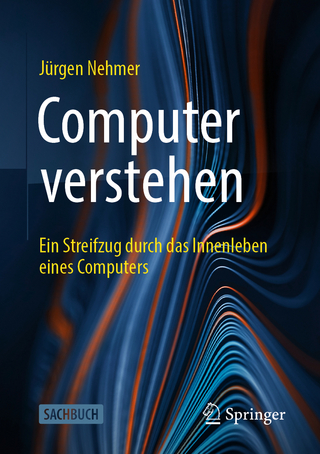
ASIC System Design with VHDL: A Paradigm
Springer-Verlag New York Inc.
978-1-4615-6475-1 (ISBN)
1. Introduction.- 1.1 Problem Statement.- 1.2 Approach.- 1.3 Organization of this Book.- 2. Background.- 2.1 The ASIC Challenge.- 2.2 Computer Architecture Design for Robotic Control.- 2.3 Robotic Kinematics.- 2.4 Summary.- 3. A Conceptual Framework for ASIC Design.- 3.1 The Nature of ASIC Design.- 3.2 The ASIC Design Process.- 3.3 The ASIC Design Hyperspace.- 3.4 The ASIC Design Repertoire.- 3.5 Summary.- 4. The IKS Chip Design Paradigm.- 4.1 Introduction.- 4.2 An ASIC Architecture Design Methodology.- 4.3 The IKS Chip Architecture Design.- 4.4 Summary.- 5. VHDL Simulation of the IKS Chip.- 5.1 Introduction.- 5.2 VHDL Fundamentals.- 5.3 Simulation Objective and Modeling Approach.- 5.4 VHDL Description of the IKS Chip.- 5.5 Simulation Results.- 5.6 Summary.- 6. Conclusion.- 6.1 Summary.- 6.2 Implications and Future Research.- Appendices.- Appendix A. The Closed Form IKS Algorithm for the PUMA.- Appendix B. The IKS Algorithm in Pseudocodes.- Appendix C. Control Signal Definition.- Appendix D. The MACC Encoding Scheme and Code-Maps.- Appendix E. The MACC Microcode for Computing the IKS.
| Erscheint lt. Verlag | 18.5.2012 |
|---|---|
| Reihe/Serie | The Springer International Series in Engineering and Computer Science ; 75 |
| Zusatzinfo | 20 Illustrations, black and white; 232 p. 20 illus. |
| Verlagsort | New York, NY |
| Sprache | englisch |
| Maße | 155 x 235 mm |
| Themenwelt | Sachbuch/Ratgeber ► Natur / Technik ► Garten |
| Informatik ► Weitere Themen ► Hardware | |
| Technik ► Elektrotechnik / Energietechnik | |
| ISBN-10 | 1-4615-6475-1 / 1461564751 |
| ISBN-13 | 978-1-4615-6475-1 / 9781461564751 |
| Zustand | Neuware |
| Haben Sie eine Frage zum Produkt? |
aus dem Bereich


